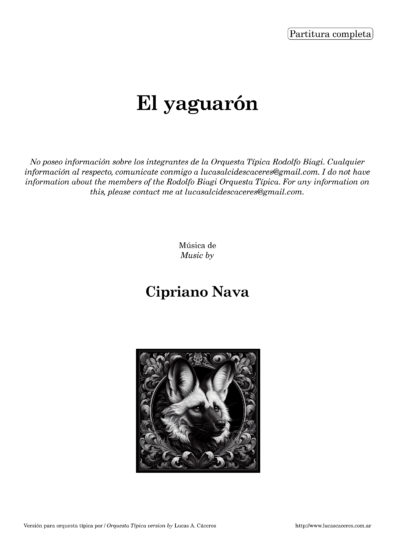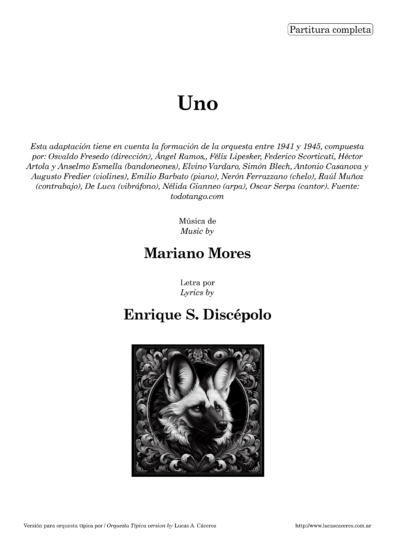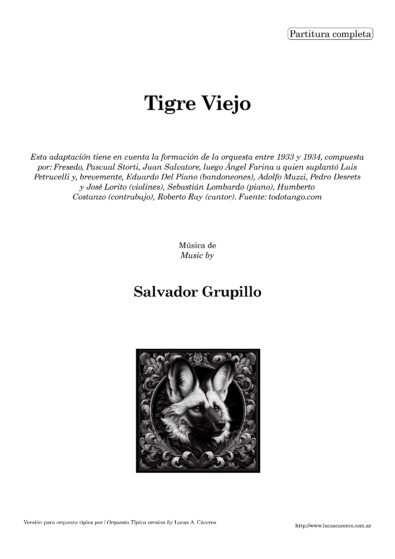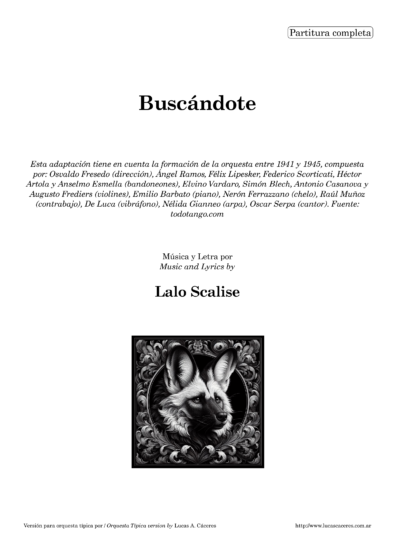Dinámicas / Dynamics
ES (english down below)
Un colega de la teleaudiencia preguntó, en base al video que largué hace unas semanas sobre los rítmicos en las cuerdas, si podía hacer un video sobre las dinámicas en los fraseos según diferentes estilos. Aunque todavía no esté hecho el video, el spoiler, lo que tienen todas las orquestas en común: Claridad en la dirección de las melodías. Los pianos, exageradísimos! Los contrastes exagerados en todos los rangos dinámicos!
Primero, claridad en la dirección de la melodía. Si una melodía expresiva dura cuatro compases, ¿cómo organizo esa información? ¿es un contínuo de 4 compases? ¿tiene una pausa en el medio? ¿es una melodía que me va a llevar a otro lado? Son preguntas que hay que ver como las responden los más capxs. Siempre recordar que una melodía es parte de un discurso y como nos expresemos va a determinar si el mensaje es claro para nuestro interlocutor. Esta decisión (la dirección) es la que nos va a determinar, entre otras cosas, la dinámica. Pueden ser crescendos, decrescendos, piano subitos, forte subitos, fortepianos, etc (pensando solo desde el aspecto de la dinámica). Son elecciones interpretativas que tanto compositores, directores y/o arregladores pueden saber responder.
Segundo, por supuesto hay variedad en el uso específico de las dinámicas según el estilo pero, a mí entender, es prioritario antes que nada tener claro que hay más «espacio» para explorar en las dinámicas bajas (y la importancia de esto). Cuando escuchamos muchas grabaciones, puede que el volumen del audio sea más o menos regular y constante. Esto está relacionado a los procesos de grabación y mezcla, al equipamiento utilizado, etc. Pero la interpretación en realidad es dinámica y con fortes y pianos más extremos en el vivo. Eso se puede percibir en el timbre. Escuchá el solo de violín de Buscándote (que subí la desgrabación hace unas semanas): El violín está tocando con presencia y claridad, pero de ninguna manera está forzando a su instrumento (el timbre te lo dice). La sección rítmica la hace toda la orquesta contra ese violín solo, así que tienen que tocar muy tranqui (y hay piano, contrabajo, bandoneones, otros violines, arpa y vibrafón). Esto es solo un ejemplito.
En esta misma sintonía es que sigue el contraste exagerado en cualquier rango dinámico. Si te toca una sección rítmica y estás acompañando un solo la respuesta es la del ejemplo anterior… Hay que bajarle a la perilla, hermanx. ¡Eso no significa que, si tocás un estilo con marcato más en 1 y 3 no deba dejar de estar la diferencia con los tiempos 2 y 4! Pero hay que negociar: ¿toco más fuerte 1 y 3? ¿o toco más bajo o casi nada el 2 y el 4? La respuesta creo que decanta sola. Un pequeñito ejemplo: El marcato del principio de La Mariposa, versión Pugliese. En los bandoneones casi que escuchamos solo las teclas! Pero en el minuto 1:02 tenemos una melodía rítmica re sacada. En ambos casos el marcato tiene acentuación en los tiempos 1 y 3, y no pueden ser dinámicamente más diferentes. En el primero el acento es con el sonido de las teclas, y las notas no acentuadas son inexistentes. La magia de los métodos de grabación con los que contó el tango desde hace ya tantísimo tiempo (por suerte), nos deja escuchar con mucho detalle casi todo al mismo volumen, pero insisto en que la diferencia dinámica está y hay que prestarle atención al timbre de cada instrumento para percibirla en las grabaciones.
Espero que esta chorrera de información general sea de utilidad para todxs. Quiero recordar que, en este trabajo de transcribir partes, simplemente apunto un 10 por ciento de lo que se escucha realmente y como material de estudio pretende facilitar el proceso de llegar a escuchar lo que a mí entender es lo más valioso que tiene el tango: el gesto, el carácter, el fraseo, la interpretación.
Nos vemos la semana que viene con Uno! Podés colaborar con el proyecto difundiendo esta plataforma o económicamente! A partir de la categoría Aguará Nocturno, tengo una serie de videos sobre Di Sarli!
EN
A colleague from the audience asked, based on the video I released a few weeks ago about rhythms in strings, if I could make a video about dynamics in phrasing according to different styles. Although the video isn’t made yet, the spoiler, what all orchestras have in common: Clarity in the direction of melodies. The pianissimos, exaggerated! The contrasts exaggerated in all dynamic ranges!
First, clarity in the direction of the melody. If an expressive melody lasts four bars, how do I organize that information? Is it a continuous four-bar phrase? Does it have a pause in the middle? Is it a melody that will lead me somewhere else? These are questions that need to be seen how the most capable answer them. Always remember that a melody is part of a discourse and how we express ourselves will determine if the message is clear to our interlocutor. This decision (the direction) is what will determine, among other things, the dynamics. They can be crescendos, decrescendos, subito pianos, subito fortes, fortepianos, etc. (thinking only from the aspect of dynamics). These are interpretative choices that composers, conductors, and/or arrangers can know how to answer.
Secondly, of course, there is variety in the specific use of dynamics according to style, but in my understanding, it is a priority first and foremost to be clear that there is more «space» to explore in the lower dynamics (and the importance of this). When we listen to many recordings, the audio volume may be more or less regular and constant. This is related to the recording and mixing processes, the equipment used, etc. But the interpretation is actually dynamic and with more extreme fortes and pianissimos live. This can be perceived in the timbre. Listen to the violin solo in «Buscándote» (I uploaded the transcription a few weeks ago): The violin is playing with presence and clarity, but by no means is it forcing its instrument (the timbre tells you so). The rhythmic section is done by the entire orchestra against that solo violin, so they have to play very quietly (and there are piano, double bass, bandoneons, other violins, harp, and vibraphone). This is just a little example.
In this same vein, exaggerated contrast follows in any dynamic range. If you have a rhythmic section and are accompanying a solo, the answer is the same as in the previous example… You have to turn down the knob, my friend. That doesn’t mean that if you play a style with marcato more on 1 and 3, the difference with beats 2 and 4 should not be there! But you have to negotiate: Do I play beats 1 and 3 louder? Or do I play beats 2 and 4 softer or almost nothing? I think the answer is clear. A small example: The marcato at the beginning of «La Mariposa» Pugliese version. In the bandoneons, we almost hear only the keys! But at minute 1:02, we have a very intense rhythmic melody. In both cases, the marcato has an accent on beats 1 and 3, and they couldn’t be more dynamically different. In the first, the accent is with the sound of the keys, and the unaccented notes are nonexistent. The magic of the recording methods that tango has had for such a long time (fortunately) lets us hear almost everything at the same volume, but I insist that the dynamic difference is there, and you have to pay attention to the timbre of each instrument to perceive it in the recordings.
I hope this general information overload is useful to everyone. I want to remind you that in this work of transcribing parts, I simply aim for 10 percent of what is really heard, and as study material, it aims to facilitate the process of getting to hear what I believe is the most valuable aspect of tango: the gesture, the character, the phrasing, the interpretation.
See you next week with «Uno»! You can support the project by spreading this platform or financially! Starting from the Aguará Nocturno category, I have a series of videos about Di Sarli!

Cómo sobrevivir los slashes siendo violinista / How to survive slashes being a violinist
ES (english down below)
Bueno, mi primer video público, tanto para Patreon como para no miembros! La premisa es la siguiente: la mayor parte de las desgrabaciones aquí compartidas tienen uno o varios segmentos rítmicos donde no se definen las notas exactas a tocar. En cambio, les ofrezco cifrado americano y slashes (barrado)… Algunxs capaz que piensan que es de vago, pero no! No es de vago, es porque es útil para todxs lxs músicxs saber cómo resolver acordes! Y para las cuerdas frotadas, que no somos del palo del jazz suele ser data que nos llega tarde. Además, si músicxs arregladorxs quisieran entender mejor la lógica del voicing en las cuerdas, puede que también sea info útil. Es por eso que dejo este humilde aporte, esperando de corazón que sea útil. Cualquier pregunta, corrección o ganas de decir algo, pueden hacerlo en la caja de comentarios!
EN
Well, my first public video, both for Patreon and non-members! The premise is the following: most of the transcriptions shared here have one or several rhythmic segments where the exact notes to be played are not defined. Instead, I offer chord symbols and slashes (slash notation)… Some might think it’s out of laziness, but no! It’s not out of laziness; it’s because it’s useful for all musicians to know how to figure out chords! And for string players, who are not from the jazz world, this information usually comes to us late. Additionally, if arranger musicians want to better understand the logic of voicing in strings, it might also be useful information. That’s why I leave this humble contribution, sincerely hoping it will be helpful. Any questions, corrections, or if you just want to say something, you can do it in the comment section!

Concierto de premiación: Concurso de composición de Nuevos Tangos 2023
(es) La Orquesta de Tango de la UNA, bajo la dirección de Ariel Pirotti, realizará un concierto donde se estrenarán las obras ganadoras del Concurso de composición de nuevos tangos para orquesta típica, edición 2023.
Se entregarán diplomas y menciones honoríficas.
📅 Lunes 1º de julio – 11 h
Sala «García Morillo» del DAMus (Av. Córdoba 2445, CABA)
Entrada libre y gratuita.
Concurso de composición de nuevos tangos. 2ª edición, año 2023
Jurado: Pablo Jaurena, Daniel Ruggiero, Sergio Alessandro Bušlje
• Obra ganadora categoría Internacional: Lo sentido, de Lucas Cáceres.
• Obra ganadora categoría Nacional: Presente continuo, de Matías González
Menciones Honoríficas:
• Subiendo el río, de Juan Genaro Rosales
• Moderno de antes, de Fernando Pelascini
• Titi, de Samuel Guillermo Arroyo y Juan Martin Arnedo
Más información: https://musicalesysonoras.una.edu.ar/agenda/concierto-de-premiacion-concurso-de-composicion-de-nuevos-tangos-2023_41663
(en) The UNA Tango Orchestra, under the conduction of Ariel Pirotti, will perform a concert featuring the premiere of the winning compositions from the 2023 edition of the New Tangos for Orquesta Típica Composition Contest.
Diplomas and honorable mentions will be awarded.
📅 Monday, July 1 – 11 a.m. «García Morillo» Hall at DAMus (2445 Córdoba Ave, CABA) Free admission.
New Tangos Composition Contest. 2nd edition, year 2023 Jury: Pablo Jaurena, Daniel Ruggiero, Sergio Alessandro Bušlje
• Winner of the International Category: «Lo sentido» by Lucas Cáceres.
• Winner of the National Category: «Presente continuo» by Matías González
Honorable Mentions:
• «Subiendo el río» by Juan Genaro Rosales
• «Moderno de antes» by Fernando Pelascini
• «Titi» by Samuel Guillermo Arroyo and Juan Martin Arnedo
More information: https://musicalesysonoras.una.edu.ar/agenda/concierto-de-premiacion-concurso-de-composicion-de-nuevos-tangos-2023_41663
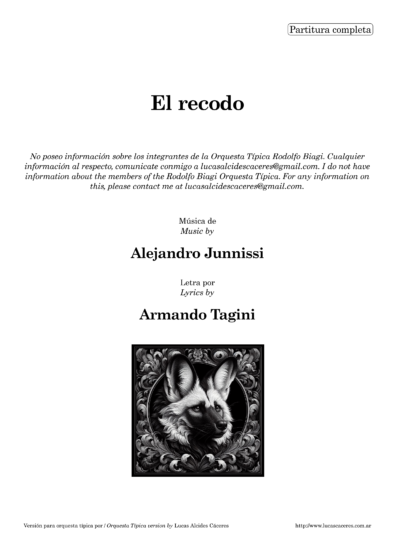
 Unlock with Patreon
Unlock with Patreon